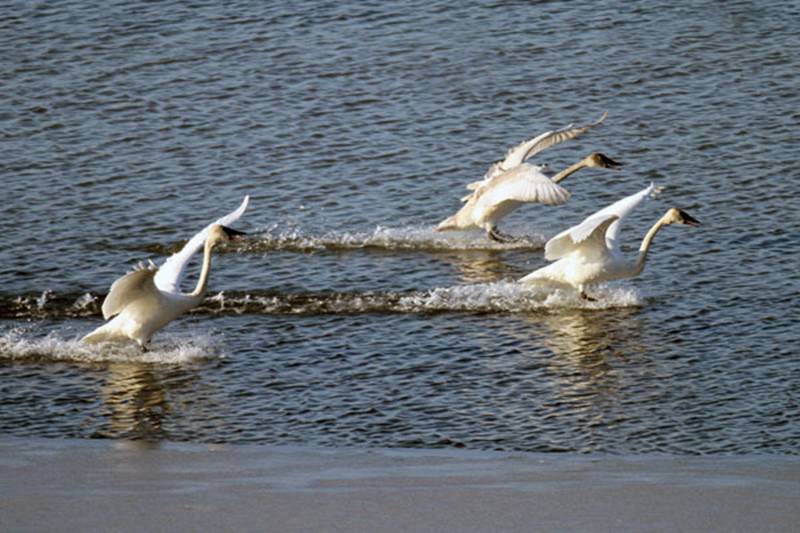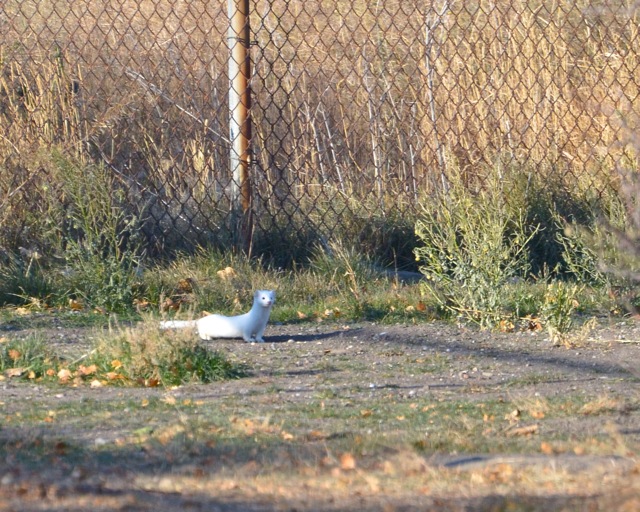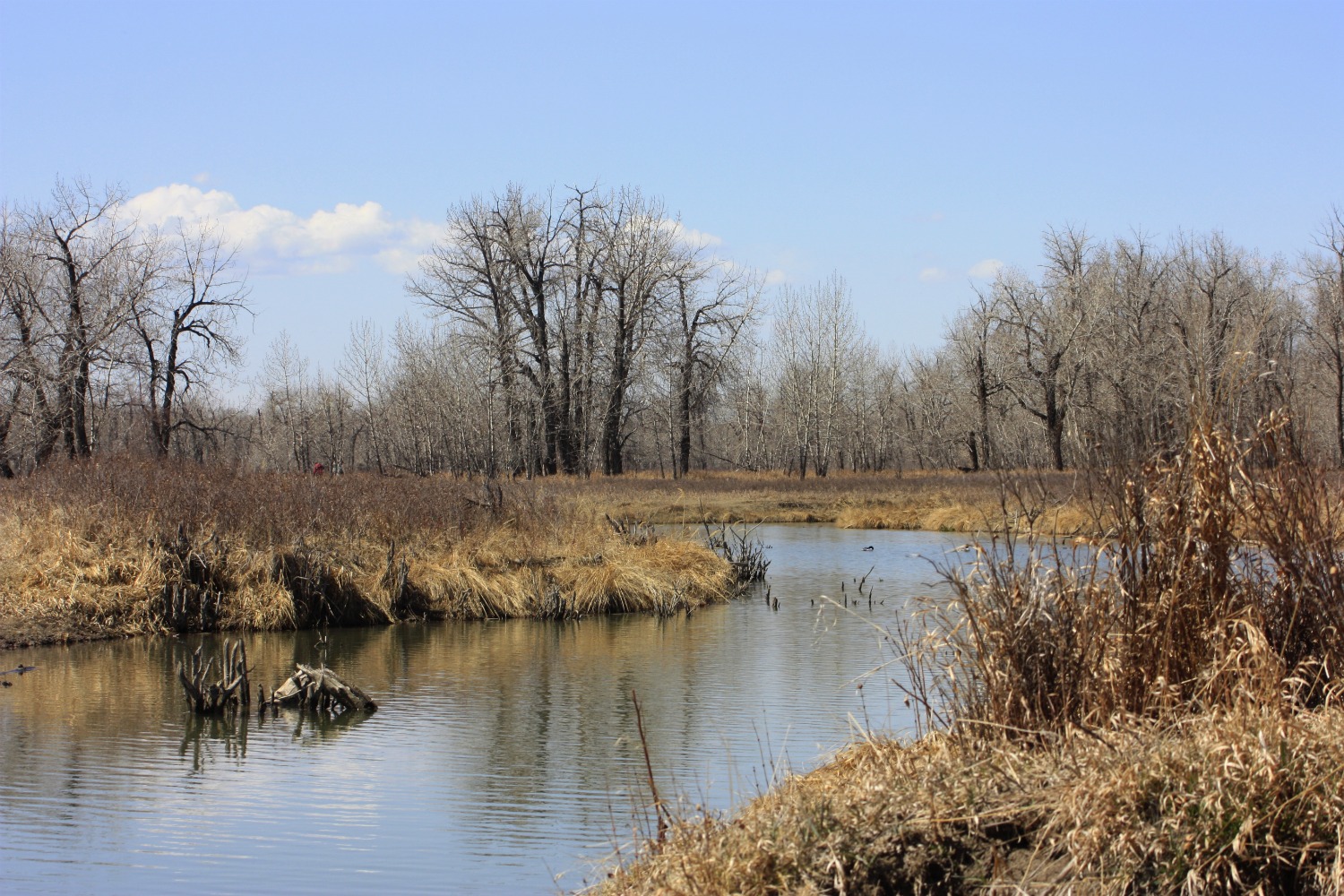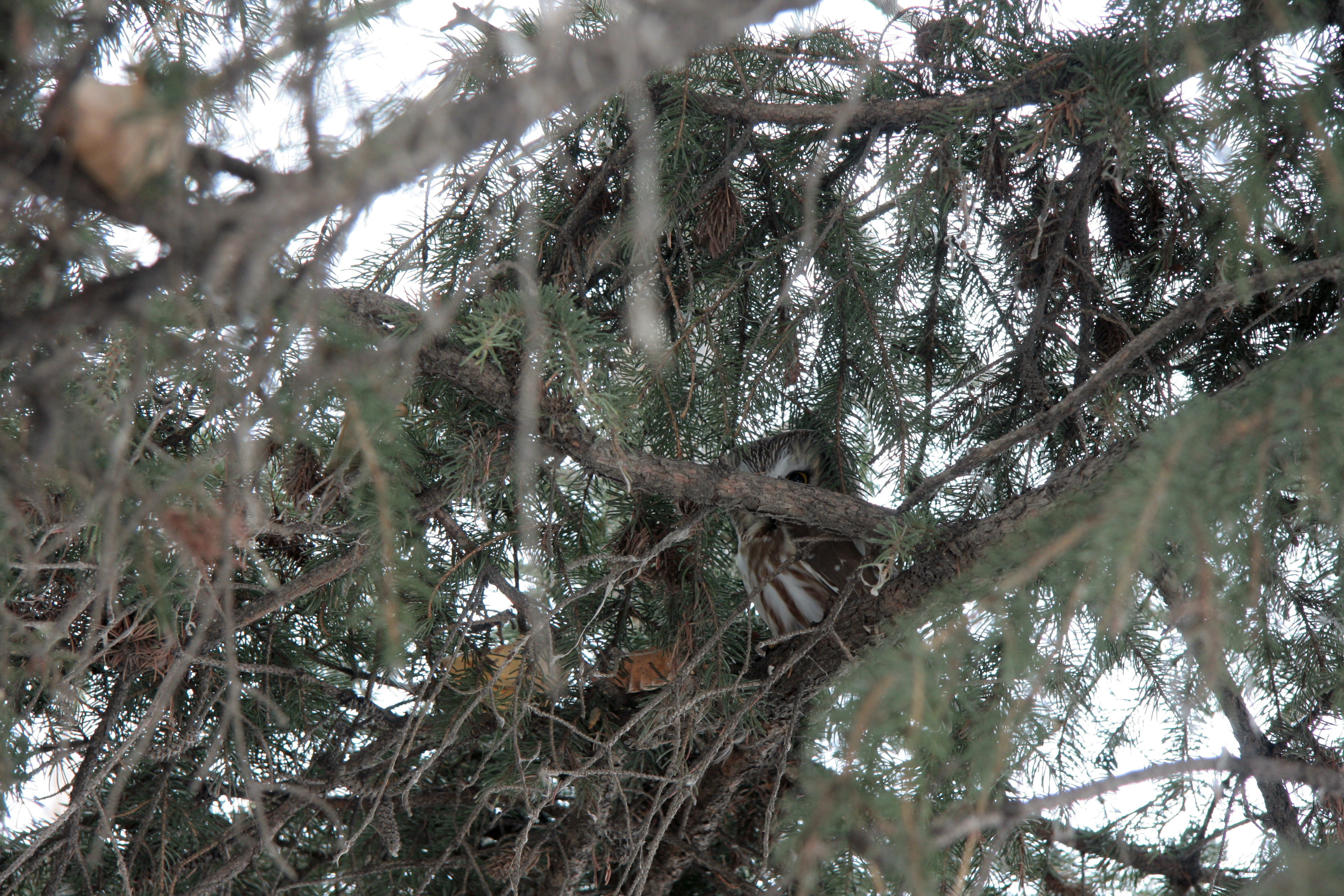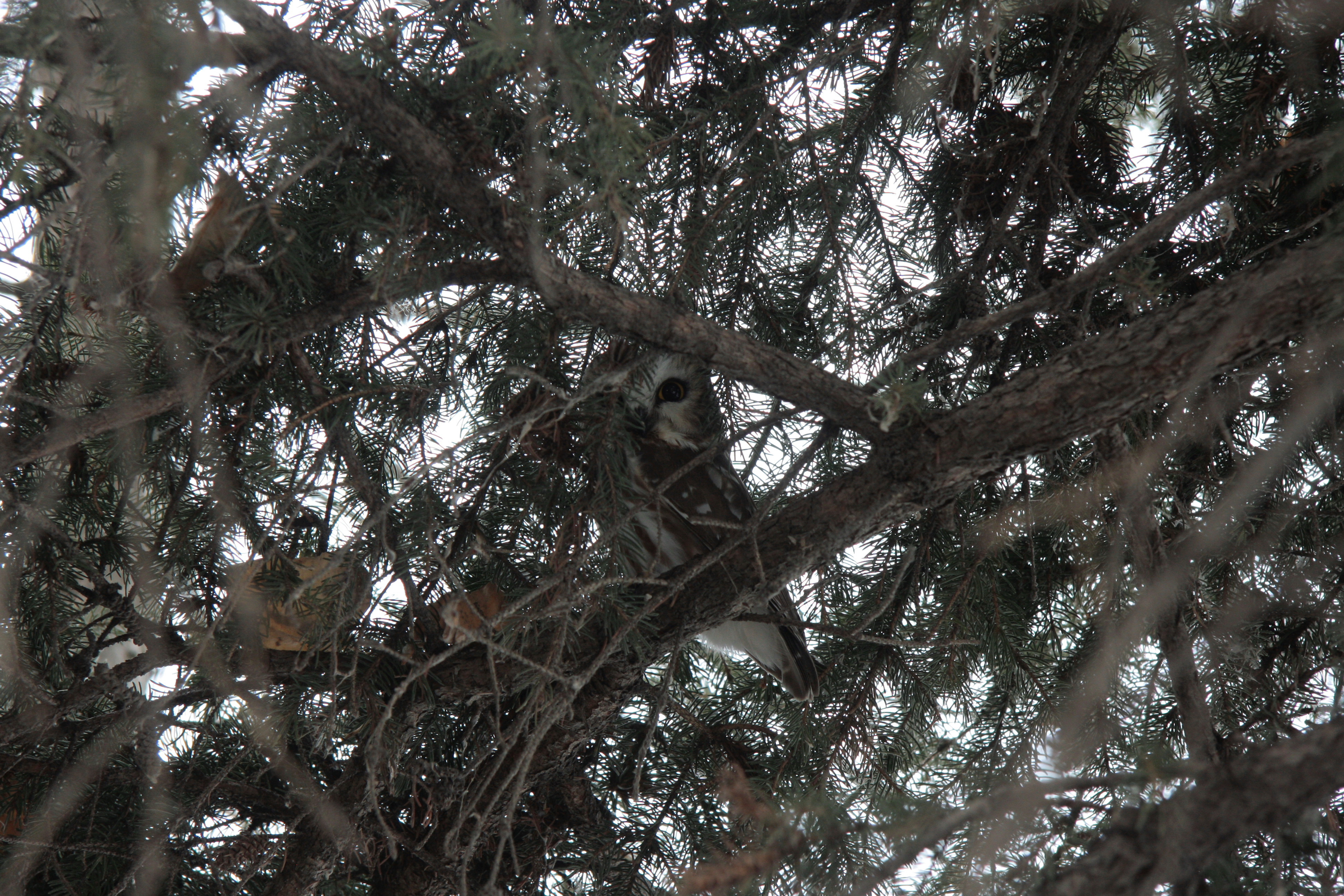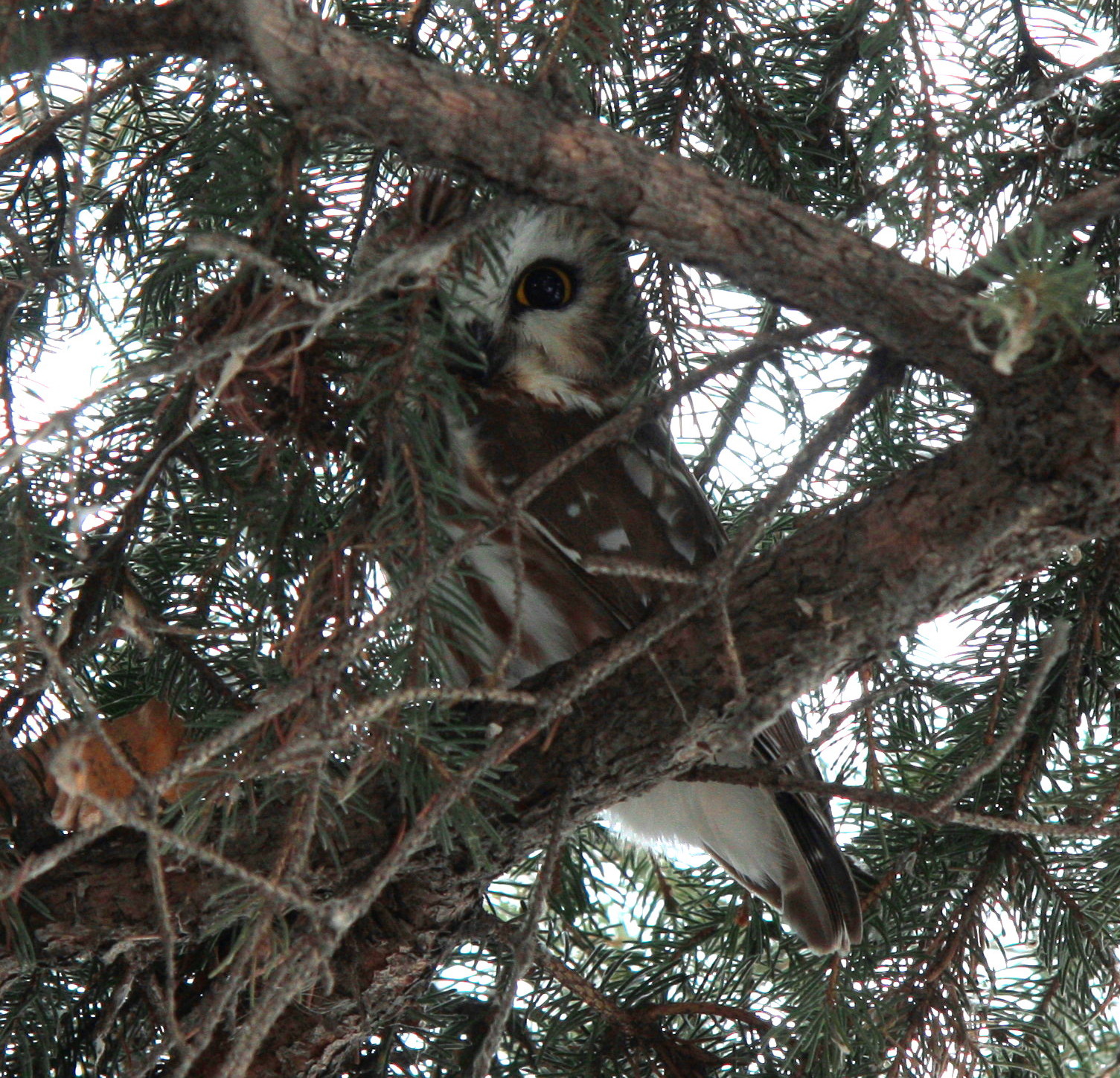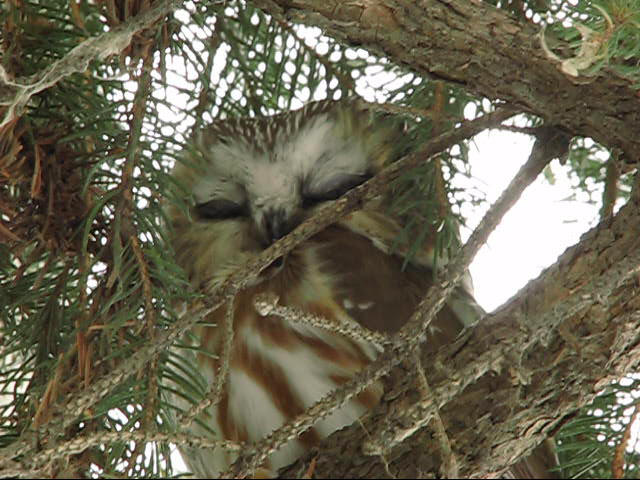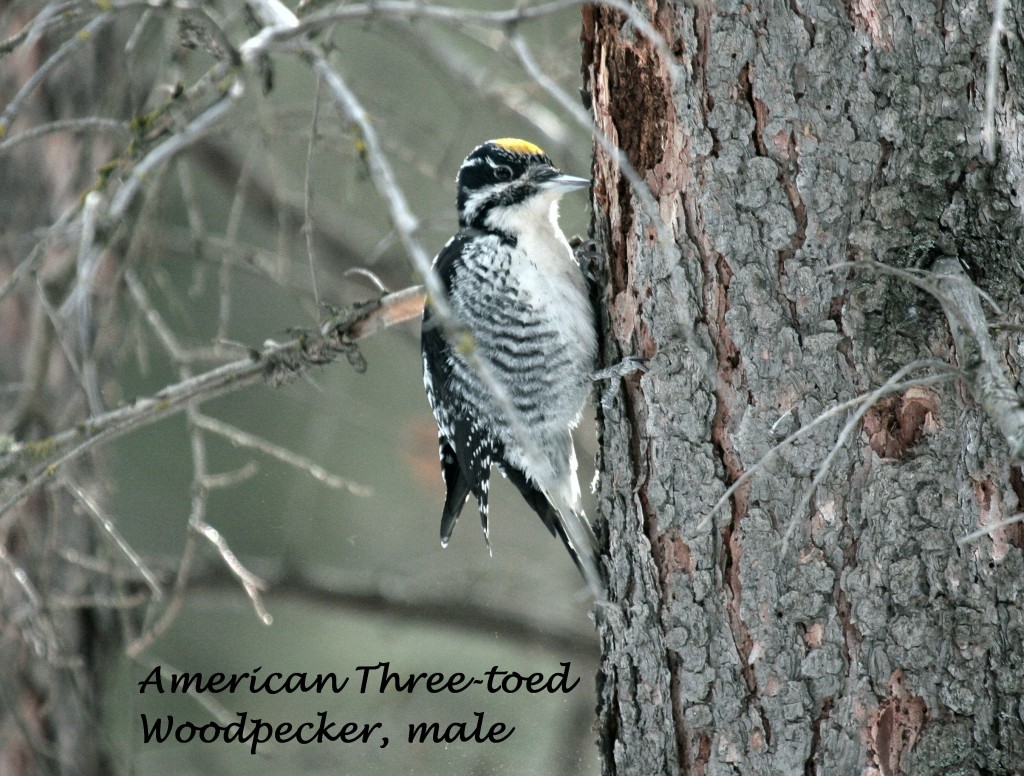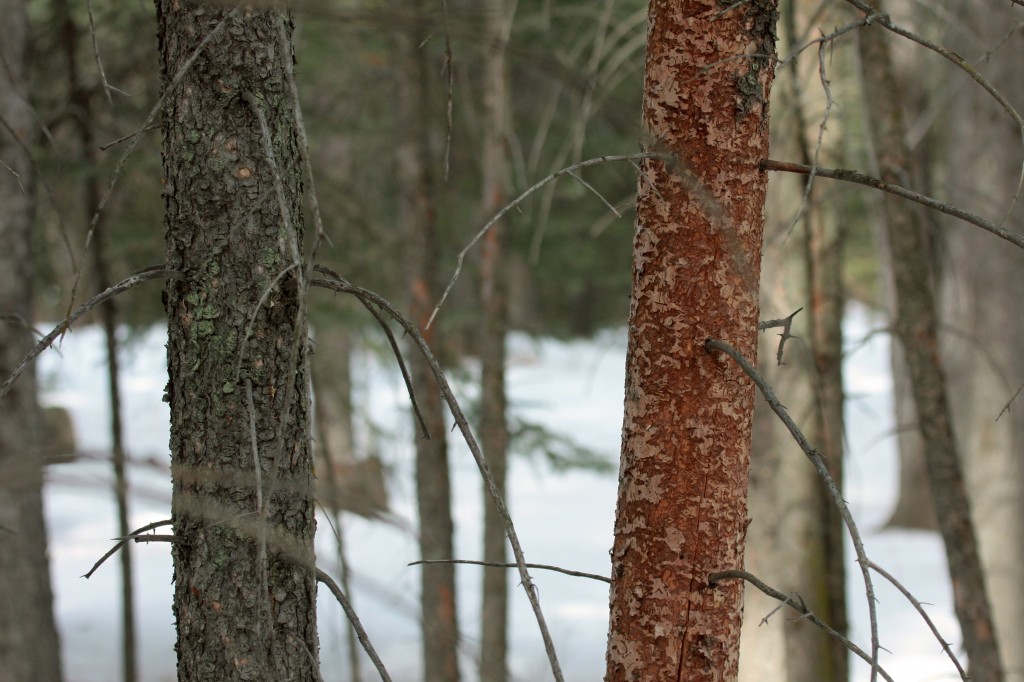Posted by Bob Lefebvre
April marks the beginning of the spring session of the Friends of Fish Creek birding courses. For this three-month session, Dan Arndt and I decided to lead a group at 7:30 a.m. on Sundays. This might seem a little early to be going out in April, but by May and June the sun will be high before we get under way, and we hope to see and hear more birds than we would later in the day.
Dan is away for the first two weeks, so I will be reporting on what we saw, with photos provided by two of the course participants, Glenn Alexon and Paul Turbitt.
The first outing, on Easter Sunday, was in North Glenmore Park and the Weaselhead. We spent about an hour checking the west end of Glenmore Reservoir first. It is still almost completely frozen, with only a few small areas open in the west end, but there were some waterfowl there, notably some impressive Trumpeter Swans.
Trumpeter Swans landing on the water. Photo by Glenn Alexon.
Common Mergansers: female (left) and male (right). Photo by Glenn Alexon.
Canada Goose taking off. Photo by Glenn Alexon.
Then we headed down in to the Weaselhead. A highlight there was a Townsend’s Solitaire singing from the top of a very tall spruce.
Townsend’s Solitaire. Photo by Glenn Alexon.
Male Downy Woodpecker. Photo by Glenn Alexon.
Female Downy Woodpecker. Photo by Glenn Alexon.
Black-capped Chickadee. Photo by Glenn Alexon.
These chickadees expect to be fed. Photo by Paul Turbitt.
Northern Flicker. Photo by Paul Turbitt.
Northern Flicker. Photo by Glenn Alexon.
There were quite a few Red Squirrels around, and a couple of Least Chipmunks were also seen.
Red Squirrel. Photo by Glenn Alexon.
We saw three Red-tailed Hawks overhead, including this dark Harlan’s Hawk.
Harlan’s Red-tailed Hawk. Photo by Paul Turbitt.
We had hoped to see Pine Grosbeaks and American Tree Sparrows at the feeders. There were none around when we first went through, but on our last stop on the way back we found a pair of each.
Pine Grosbeak. Photo by Glenn Alexon.
Pine Grosbeak. Photo by Paul Turbitt.
Pine Grosbeak. Photo by Paul Turbitt.
American Tree Sparrow feeding on the ground. Photo by Glenn Alexon.
Back up by the parking lot, an early Richardson’s Ground Squirrel was the last species of the day.
Richardson’s Ground Squirrel. Photo by Glenn Alexon.
In all, we saw 28 bird species and four mammals. The eight groups who went to this area during the first week of the course collectively saw 48 bird species and six mammal species. The Weaselhead is a great place for spring birding!
To see more of Glenn Alexon’s photos, go to his Flickr page.
To read about one of the Saturday morning course outings, go to David Pugh’s blog.
